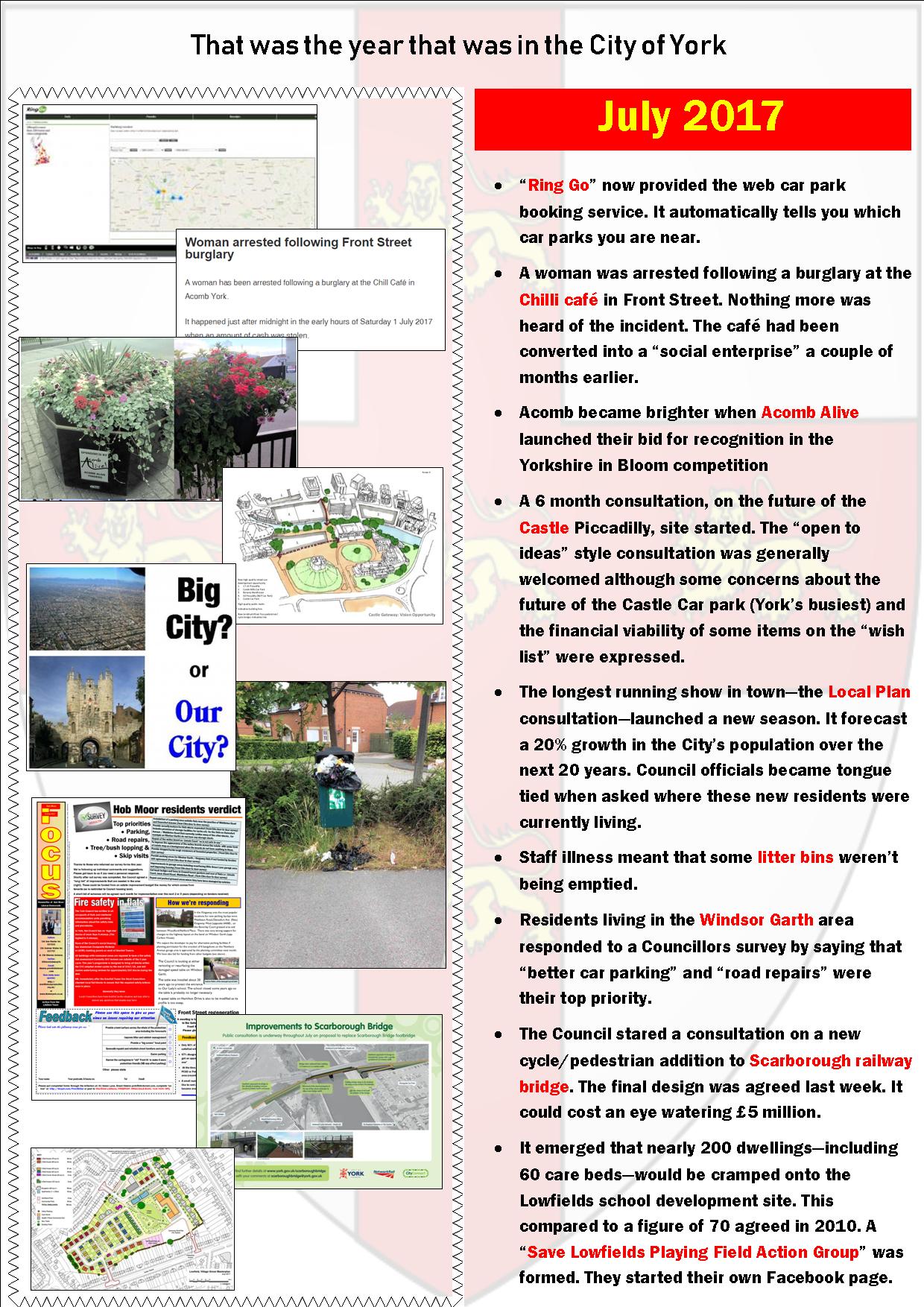
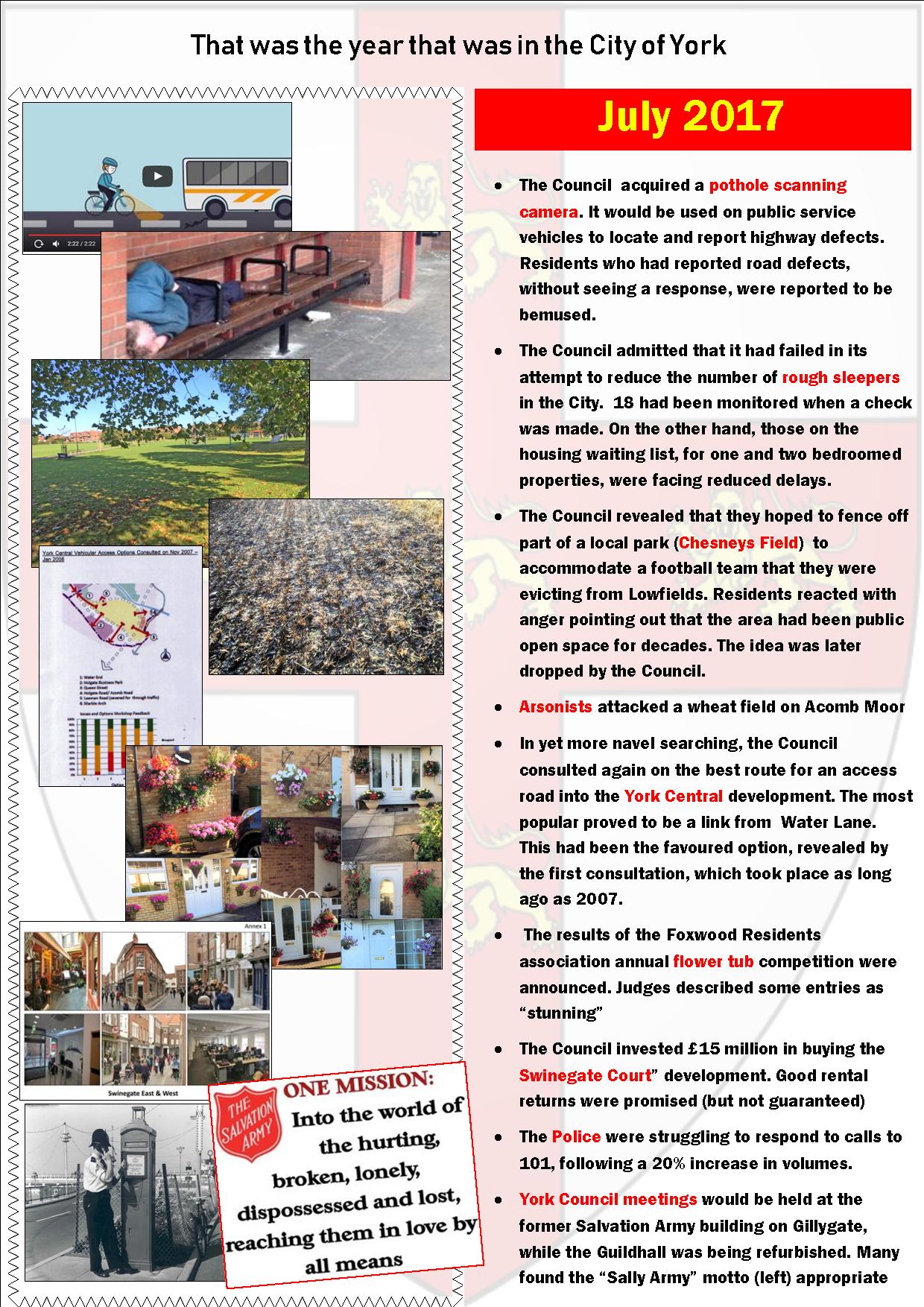
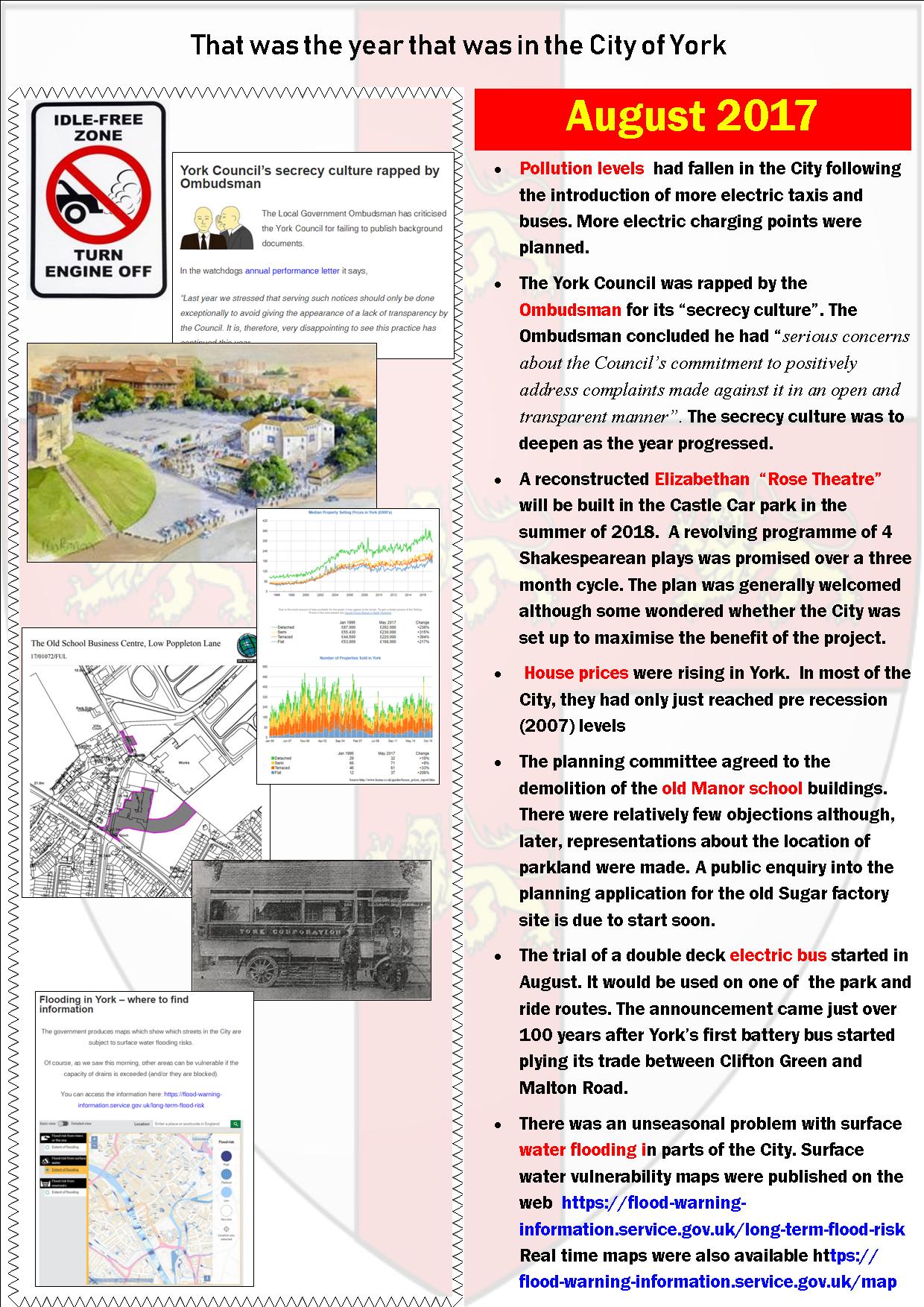
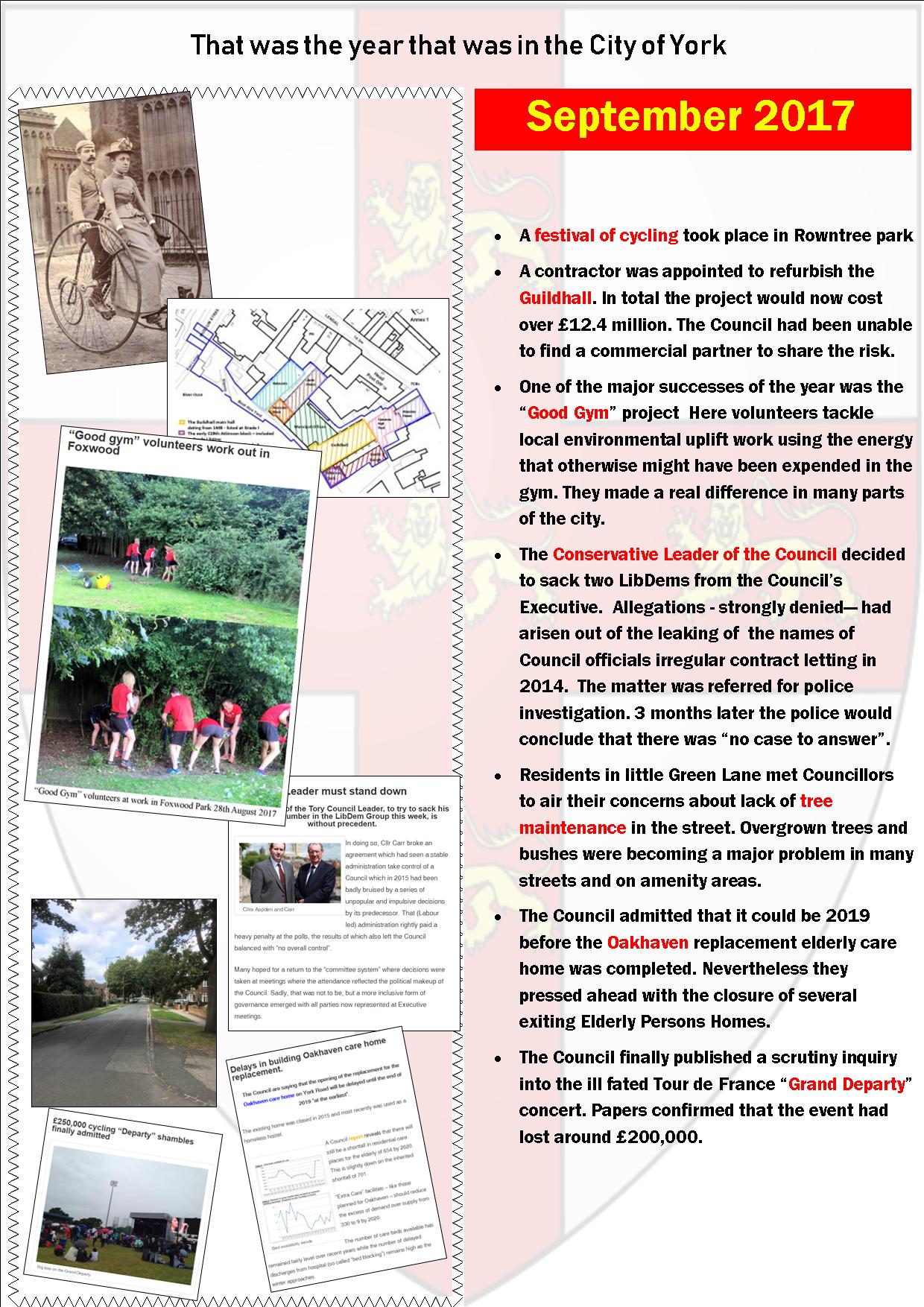
That was the year that was: Jan 2017 – Mar 2017
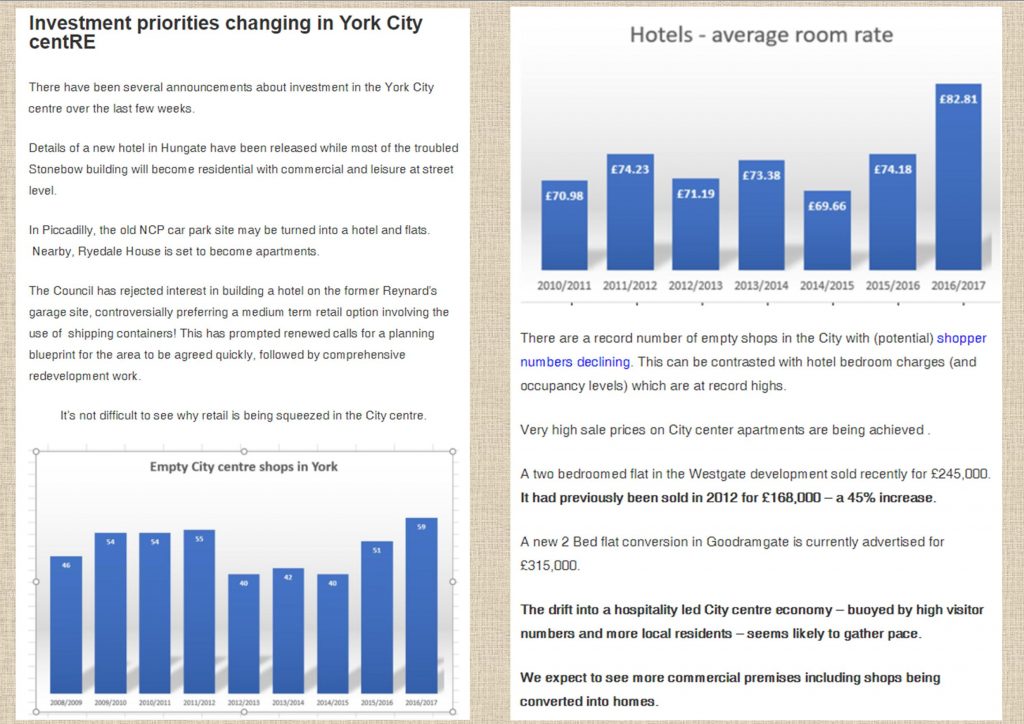
The year began with mixed news about the city centre economy. Visitor numbers were beginning to increase and would be sustained for most of the rest of the year. However, empty shops continued to blight key roads like Coney Street. 12 months later that problem remains.
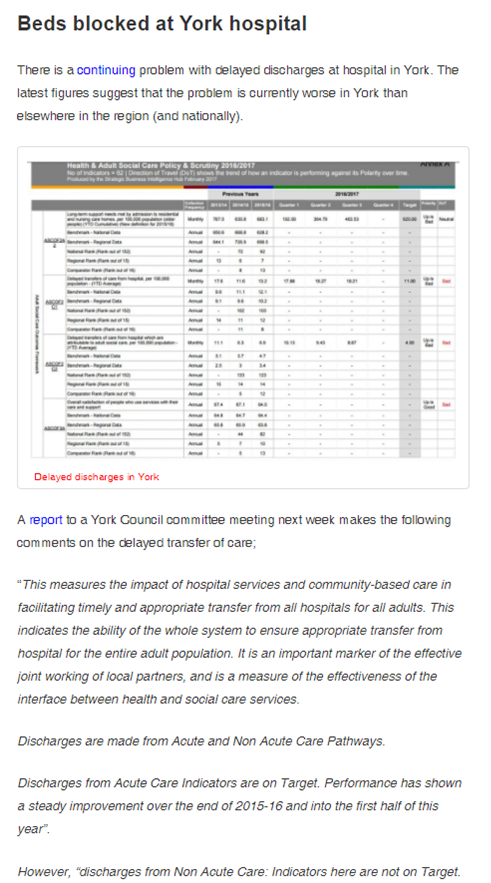
The NHS continued to be a major concern during 2017. There were early problems when the number of delayed discharges remained stubbornly high. A & E waiting times were also a problem
 The community Stadium would also be a recurring issue during the year. After several false dawns, a nominal start was made “on site” in December.
The community Stadium would also be a recurring issue during the year. After several false dawns, a nominal start was made “on site” in December.
The cost to taxpayers remains high and there are continuing concerns about the viability of parts of the £44 million project.
It will be summer 2019 before it becomes clearer what the final costs will be and, critically, whether any ongoing taxpayers subsidy will be required.
The stadium itself,though, should now have a stable future with most of its cost being paid for through Section 106 monies which were first brokered in 2010.
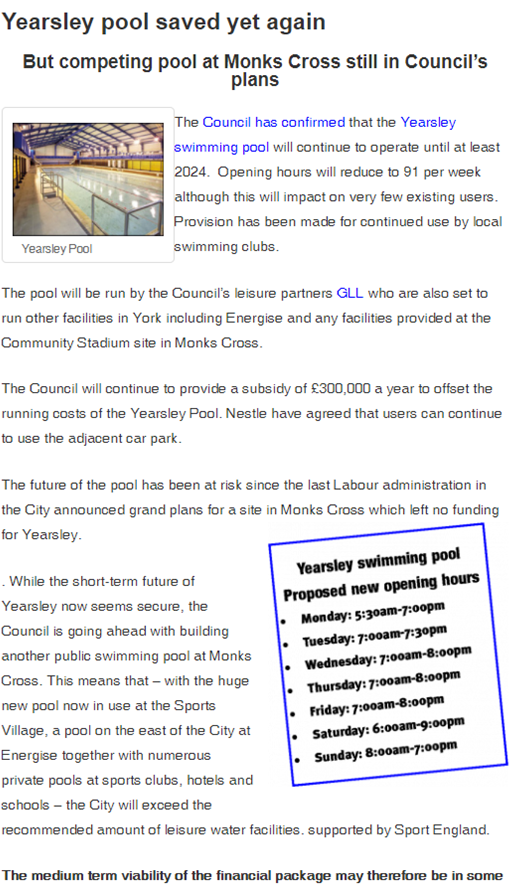
As part of the stadium deal, the long term future of the Yearsley swimming pool was confirmed
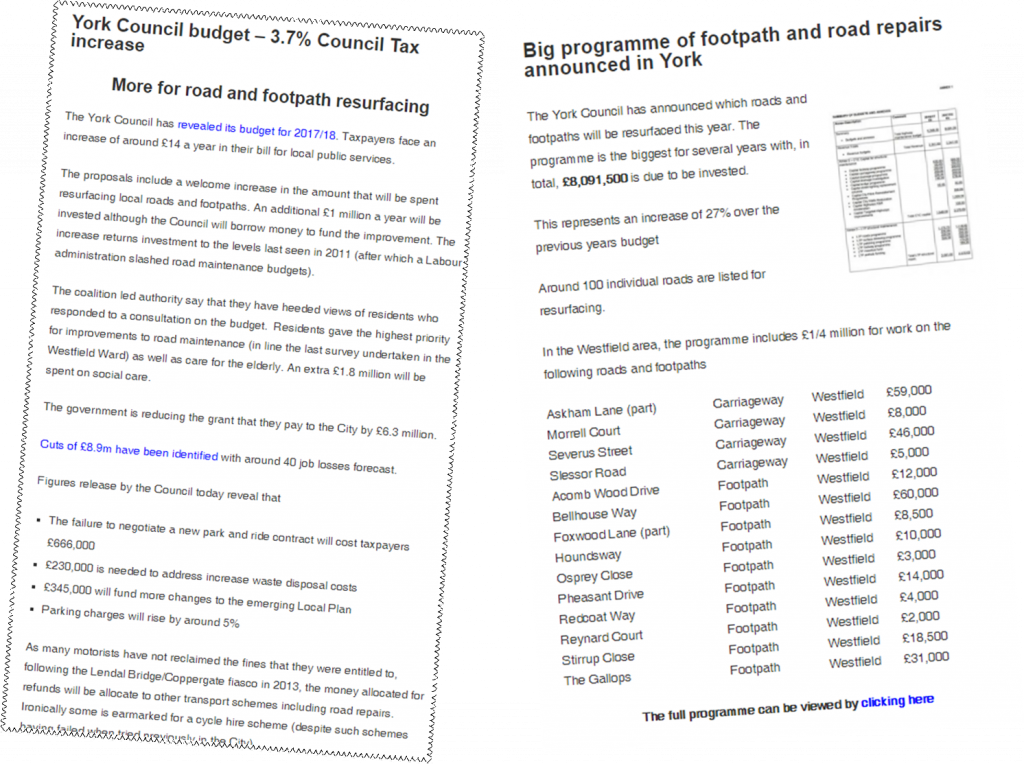
Next up was a decision by the York Council to increase tax rates by 3.7%
Part of this was ring fenced to help deal with the increased demands of an ageing population.
The Council also increased the rate at which roads and footpaths were being resurfaced – a policy which found favour with most York residents.
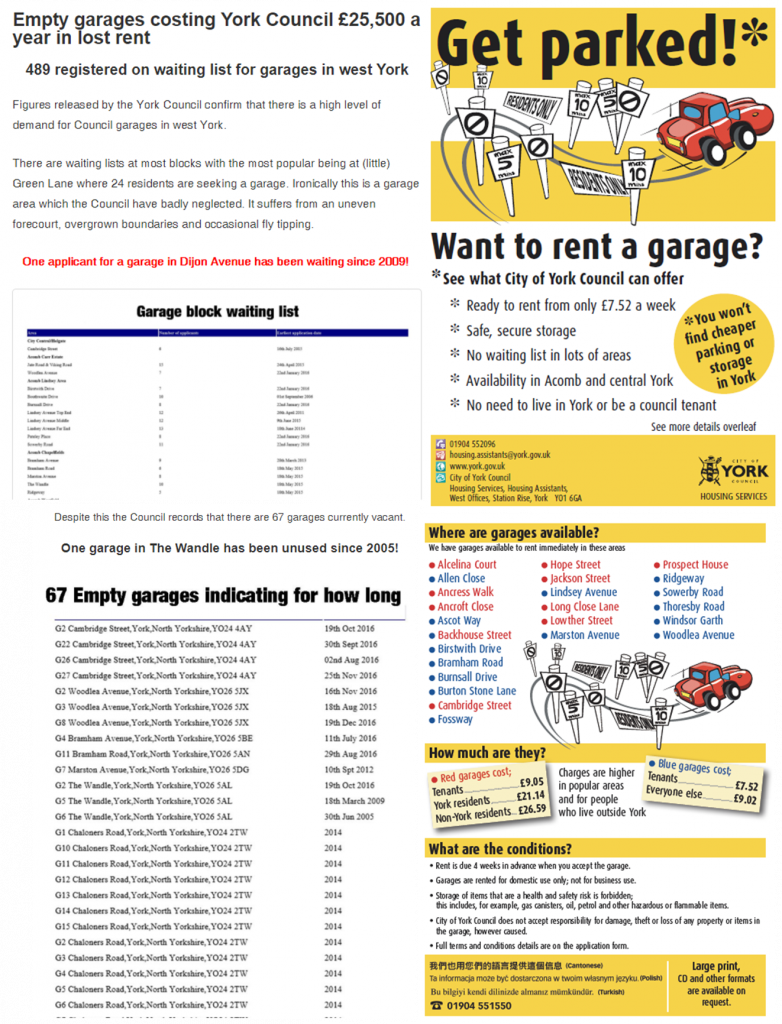
Rather less impressive was the Council’s performance in managing its stock of garages. An FOI in February revealed that large numbers were empty at a time when hundreds were on the waiting list for garages. 10 months later, and the list of blocks where there are vacancies has not changed. Yet there has still been little publicity aimed at securing a regular rental income.
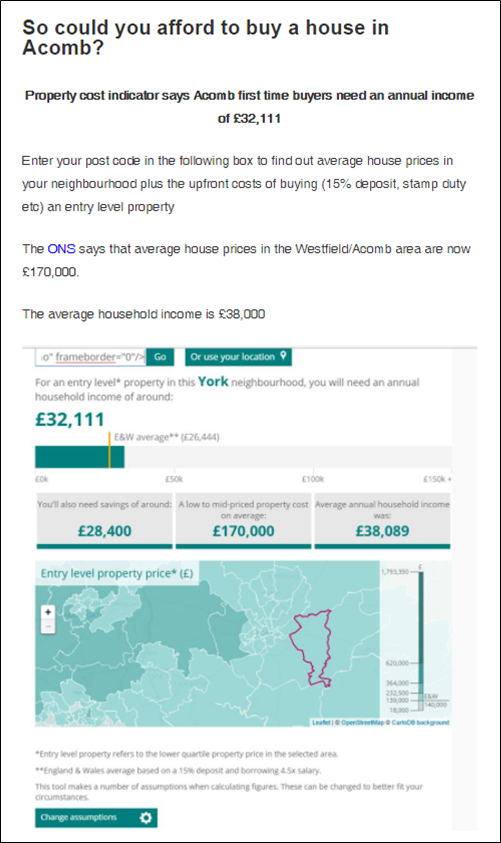
House prices started to rise in the City. Even in the suburbs purchase of a starter home required someone to be earning over £30,000 a year
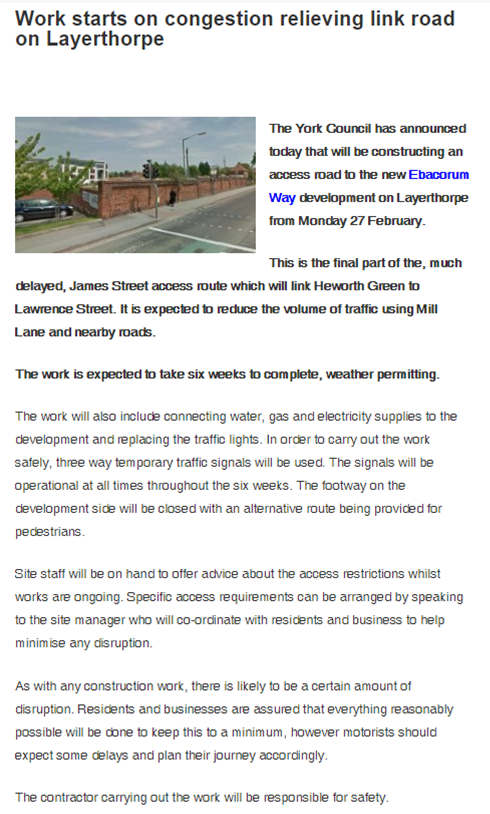
Some good news in February as work started on the Layerthorpe links road. It would open later in the year bringing relief to the Foss Islands Road and Heworth parts of the City

There was trouble on the west of the City. The Councils plans to develop the Lowfields playing field attracted major objections. As part of the project an alternative elderly persons home had been planned for the Oakhaven site on York Road. and the Council announced a contractor for the project.
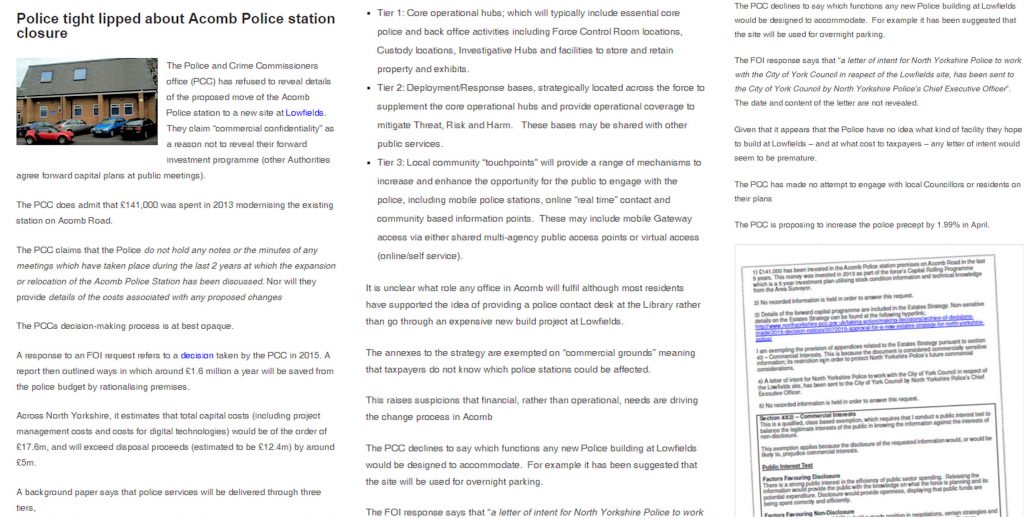
The plan remains on the back burner with controversy extending to plans to relocate the Acomb Police station and demolish the adjacent Carlton Tavern. Doubts about the future of the Tavern continue into 2018
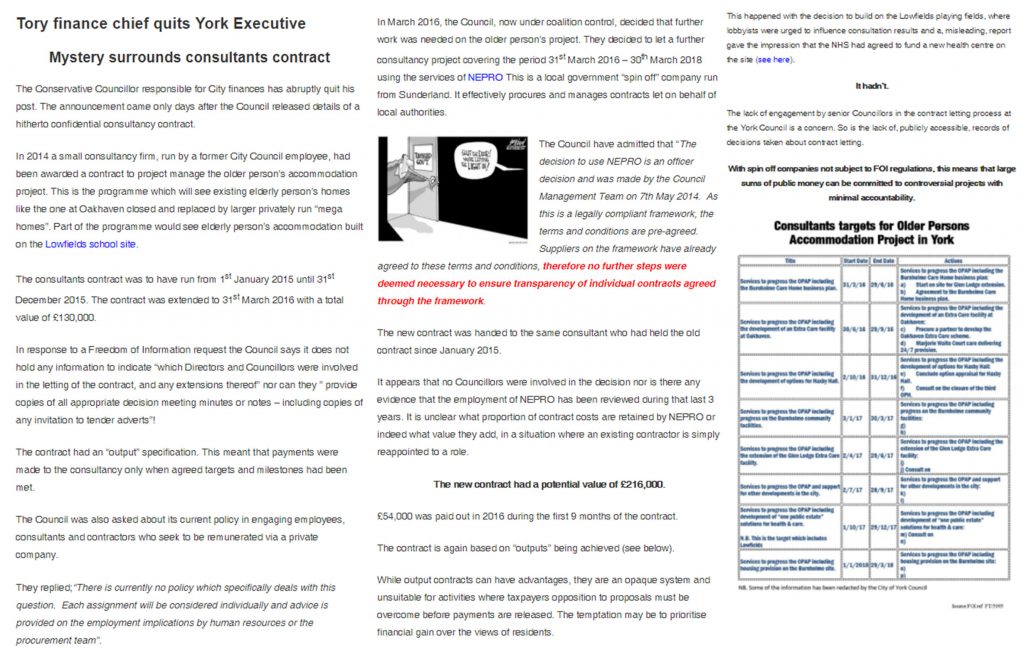
The first in a series of revelations, about the way in which the Council appointed contractors to deliver policies, became public. It appeared that a consultant was appointed on a “results” basis contract. The result required was the delivery of the Lowfields redevelopment…. irrespective of the views of local residents.
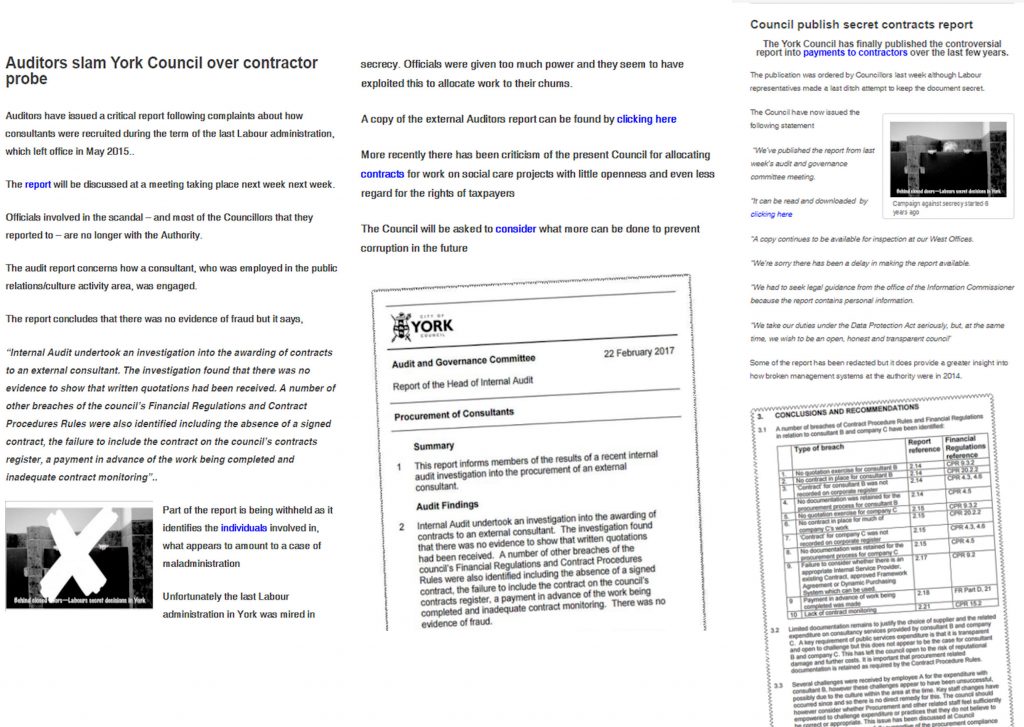
Another long running saga started when auditors questioned the way in which the last Labour led Council had appointed consultants. Some Councillors insisted on the report being made public. This was done, but in a redacted format. Later in the year a copy was leaked to the media with the names of the people concerned included. This was to lead to a major row which even today looks like it could end the coalition agreement which has run the Council since 2015.

The Authorities neglected problems with vehicle speeds. The 20-mph speed limit project had failed with average speeds, on some roads with the new lower limit, having increased. Many flashing speed warning signs were found to be faulty. The North Yorkshire Police and Crime Commissioner decided to double the number of speed vans on the streets of the county. It later transpired that they were deployed mainly on trunk roads where they were pretty much guaranteed to catch large numbers of speeders. In turn drivers were charged to attend “awareness” courses, the income from which was used to pay for the vans. The Police, in response to an FOI request, said that they didn’t monitor whether average speed levels at camera sites were reducing. Neither could they say whether the number of accidents on the same stretches of road had reduced. Meanwhile, in sub-urban areas the promised “reassurance” visits from the vans, never materialised.
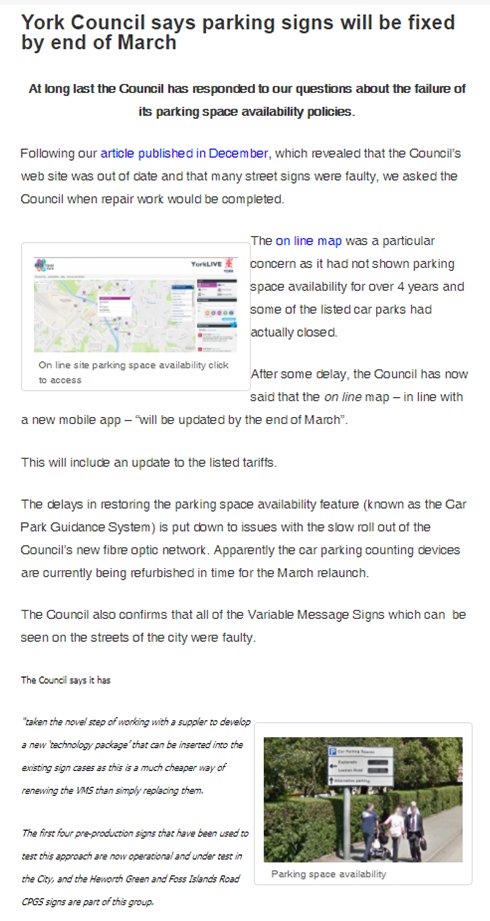
The Council was having a difficult time keeping its signs in working order. After 3 years, City centre “Variable Message Signs” were repaired but the car parking space availability signs are still not working despite faults being discovered in 2014.
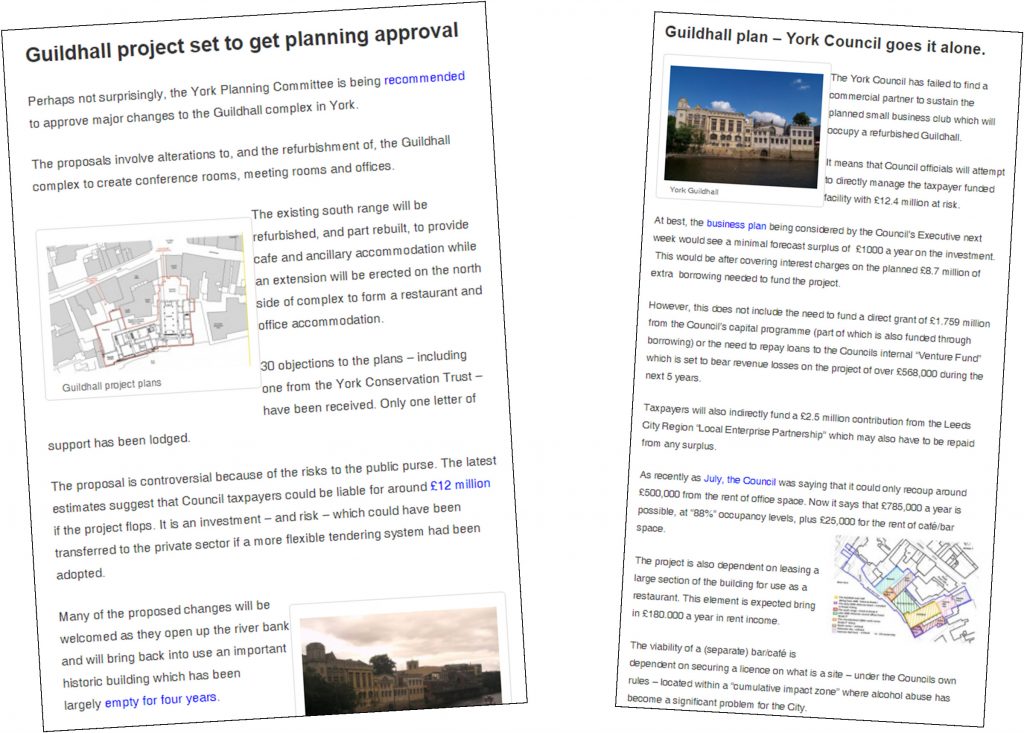
The Council got planning permission for its £12 million scheme to redevelop the Guildhall complex. Unfortunately it couldn’t find a commercial partner for the plan so the considerable risk for the project will fall on taxpayers. Work on the project has just started.
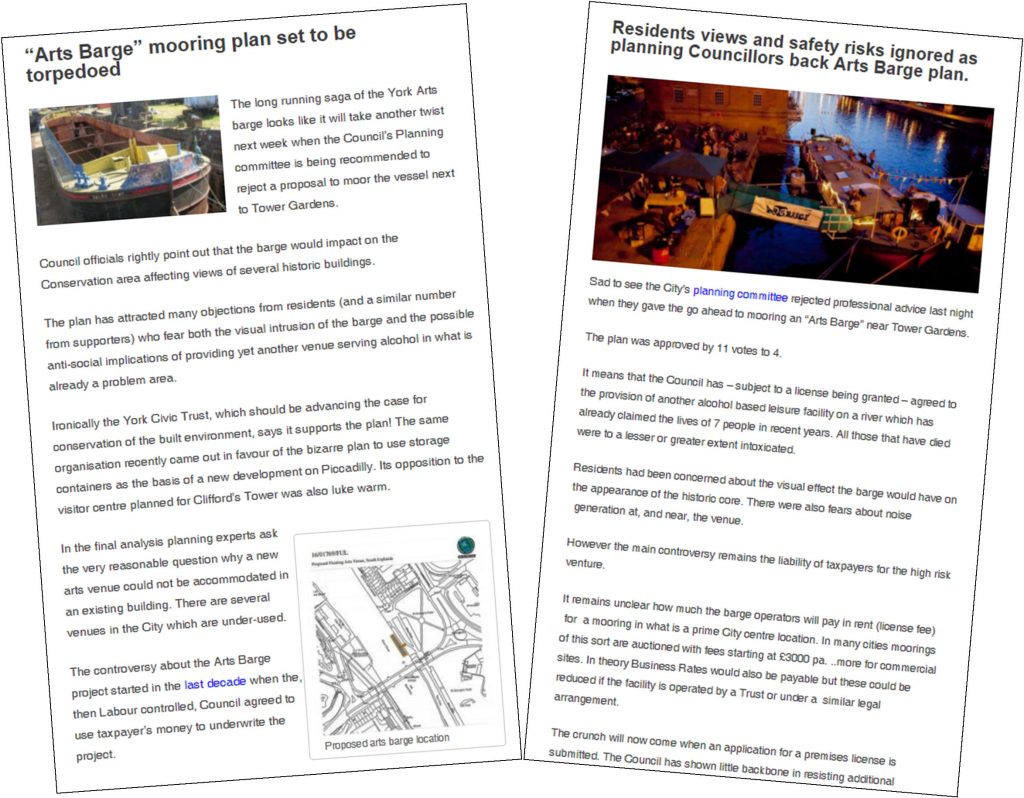
The Planning committee had a mixed year. It had earlier approved an ugly visitor centre at Cliffords Tower. This decision led to a judicial review with the fate of the centre still in doubt.
Nearby they gave planning permission for an Art Barge which was to be moored on the Ouse. Warnings about the wisdom of mixing alcohol and river safety were ignored. The barge was last seen moored in the Foss basin.
But perhaps the biggest planning controversy of the year concerned the shipping container village on Piccadilly. As we will see in the next part of our review of the year, the containers arrived but the customers did not.
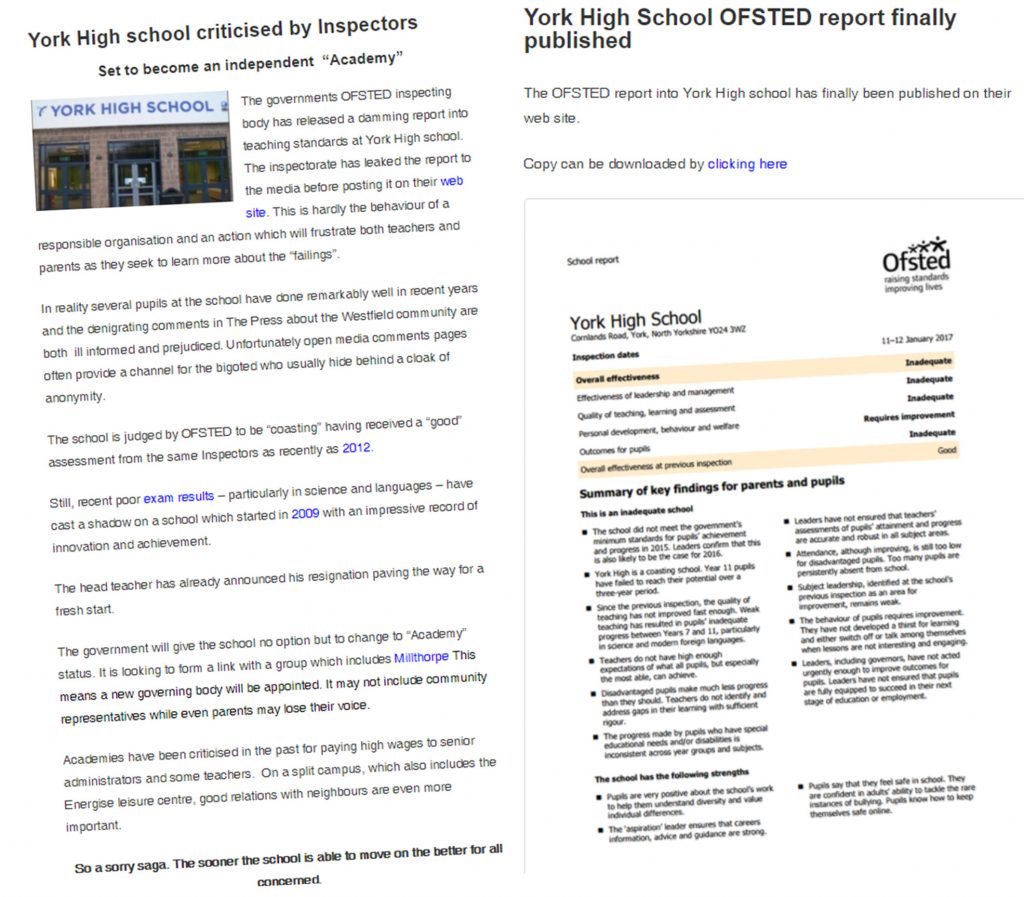
In the west of the City, York High school got a poor OFSTED report. Later the head teacher was to resign and plans to turn the school into an “academy” were revealed.
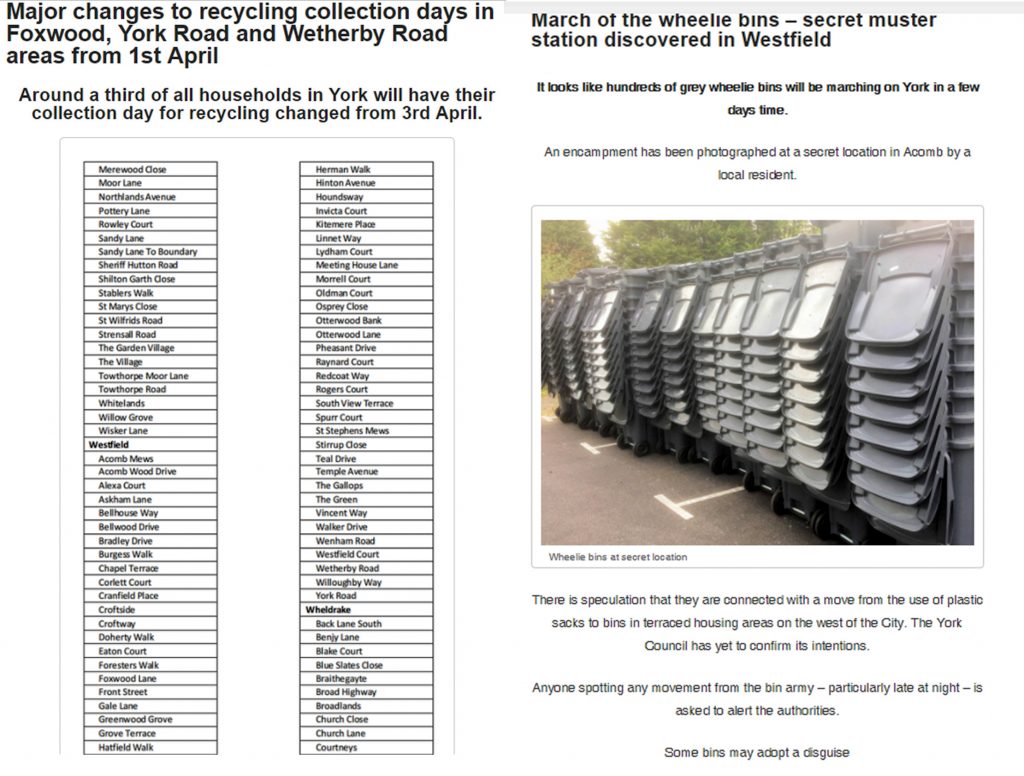
One change that did go through, with relatively few problems, were revisions to recycling collection days.
On 1st April areas which did not have wheeled bins were also added the system for the first time.

